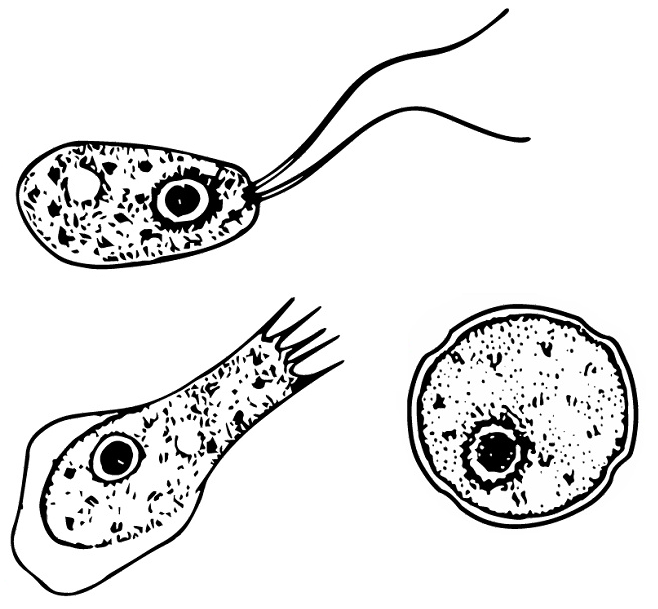Naegleria fowleri
| Naegleria fowleri | |
|---|---|
 |
|
| the stages flagellate, trophozoite and cyst (seen from upper left to lower left to right) of Naegleria fowleri | |
| Scientific classification | |
| Domain: | Eukaryota |
| (unranked): | Protista |
| Phylum: | Percolozoa |
| Class: | Heterolobosea |
| Order: | Schizopyrenida |
| Family: | Vahlkampfiidae |
| Genus: | Naegleria |
| Species: | N. fowleri |
| Binomial name | |
|
Naegleria fowleri Carter (1970) |
|
Naegleria fowleri, colloquially known as the "brain-eating amoeba", is a species of the genus Naegleria, belonging to the phylum Percolozoa. It is a free-living, bacteria-eating amoeba that can be pathogenic, causing a fulminant (sudden and severe) brain infection called naegleriasis, also known as primary amoebic meningoencephalitis (PAM). This microorganism is typically found in bodies of warm freshwater, such as ponds, lakes, rivers, and hot springs. It is also found in the soil near warm-water discharges of industrial plants, and in unchlorinated or minimally-chlorinated swimming pools. It can be seen in either an amoeboid or temporary flagellate stage.
Naegleria fowleri is a thermophilic (heat-loving), free-living amoeba. It is found in warm and hot freshwater ponds, lakes and rivers, and in the very warm water of hot springs. As the water temperature rises, its numbers increase. The amoeba was identified in the 1960s in Australia but appears to have evolved in the United States.N. fowleri occurs in three forms – as a cyst, a trophozoite (ameboid), and a biflagellate (it has two flagella). It does not form a cyst in human tissue, where only the amoeboid trophozoite stage exists. The flagellate form can exist in the cerebrospinal fluid.
The cyst form is spherical and about 7-15 µm in diameter. They are smooth, and have a single-layered wall with a single nucleus. Cysts are naturally resistant to environmental factors, so as to increase the chances of survival until better conditions occur. Trophozoites encyst due to unfavorable conditions. Factors that induce cyst formation include a lack of food, overcrowding, desiccation, accumulation of waste products, and cold temperatures. When conditions improve, the amoeba can escape through the pore, or ostiole, seen in the middle of the cyst. N. fowleri has been found to encyst at temperatures below 10 °C (50 °F).
...
Wikipedia
